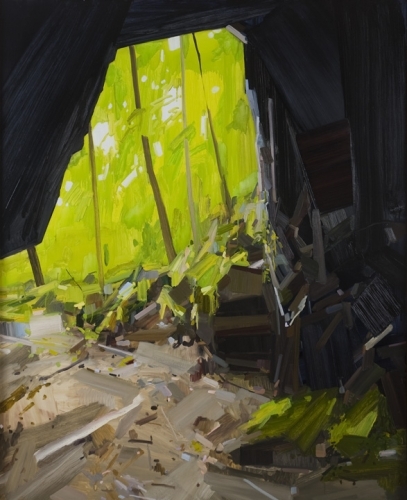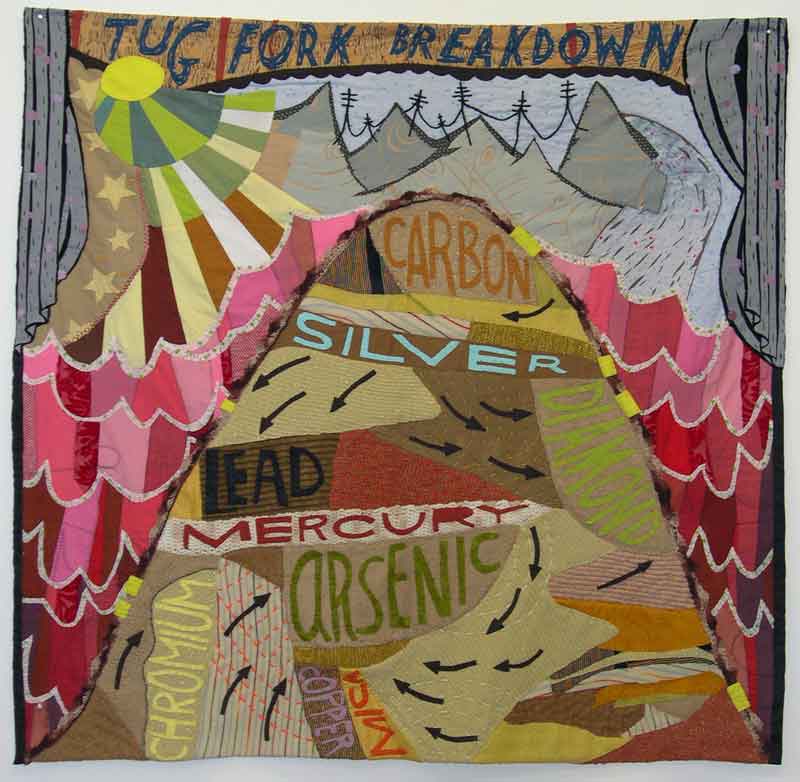The 7 Borders exhibition at the Kentucky Museum of Art and Craft
By Chelsea Gifford
With Kentucky positioned at the confluence of its seven neighboring states, The 7 Borders exhibition at the Kentucky Museum of Art and Craft ambitiously seeks to interpret and expand the mission of the institution by widening the scope of artists it considers and justifying that choice through thoughtful reinterpretations of what it means to identify with Kentucky’s geography, aesthetics and craft traditions. Curated by Joey Yates, the show makes a fresh and compelling argument for the necessary expansion of those definitions, and in turn, presents Kentucky as the keystone in the region’s distinct creative identity.
Rashid Johnson and Taylor Baldwin at first seem like unlikely candidates for regional affiliation; Baldwin is originally from Arizona, and received his education in Virginia- yet with a solo show at The Land of Tomorrow Gallery in Louisville, and a curatorial credit at the same gallery, Baldwin has spent a significant amount of time in the Commonwealth in the last few years, simultaneously influencing it as it influences him. Yates’ supposition that an artist identified with the region is more about who can legitimately appropriate our symbols and legacies is a compelling one, and sees its dénouement in the inclusion of work by Rashid Johnson. While not as tied to Kentucky as Baldwin, much of Johnson’s work is about creating and identifying real and idealized ancestors to associate one’s self with. It is no surprise then that the work of this artist, who seeks to blur the lines between historical fact and fiction, and who although educated in Illinois, now lives in New York, is featured in a show seeking to present identity is porous and manifold. Yates points out that some of the mentors Johnson alludes to in his work are from Kentucky, and so opens the scope of Kentucky’s influence from the past to the present.
Two pieces which explore the contemporary identity of craft in the region are Denise Burge’s quilts and Mark Moskovitz’s Facecord. Subverting traditional notions of symmetry and design, Burge’s quilts are a cacophony of patterns and textures, cataloguing both the visual and literal absurdity of environmental exploitation. Facecord appears at first to be a pile of firewood, but reveals itself instead a dresser complete with four camouflaged drawers. Reflecting the hybridization of contemporary art and craft in the region is Indiana based artist Brian McCutcheon’s Trailer Queen II, a BBQ grill decked out with flames, an automotive quality paint finish with chrome exhaust pipes- a nod to Indy car culture in his state. The inclusions of these pieces demonstrated to me KMAC’s continued commitment to supporting artists who use traditional techniques and materials, and whose locus is regional identity and experience.
Exploration of the distinctive environments and topographical features shared by the seven states surrounding Kentucky also features prominently in the exhibit. Joel Ross’ yard signs series spell out real and implied life experiences against the background of suburban homes; “my bowling thumb is still sore,” one front yard series of signs declares, and in another, “there are things I forgot to tell you”. Leticia Bajuyo’s Pre-fab(ulous) Environments document the familiarity and undeniable presence of the suburbs in the collective regional psyche.
Todd Smith’s Light Map Series of photographs show Smith scaling the branches of trees in his city parks wearing a specially designed suit with different colored lights before a long exposure lens. The result is long necklaces of light encircling the branches against the dark night sky. The influence of trees is also seen in Claire Sherman’s two tree paintings, which are large format studies of light through the foliage canopy in summer and snow. “The light is different here than in California”, remarked Yates. Sharing a regional landscape not only creates a shared experience, but also shared aesthetics based on those experiences.
The show stands as a nuanced argument for a reinterpretation and expansion of the purview of the Kentucky Museum of Art and Craft related to what it means to be an artist creating the material culture associated with this part of the country, positioning it for real consideration as a distinct (albeit Kentucky centered) hive of creative outpouring. Worth the drive, the flight, the admission: The 7 Borders sets the bar high, both conceptually and aesthetically for future efforts from Yates and the institution.





